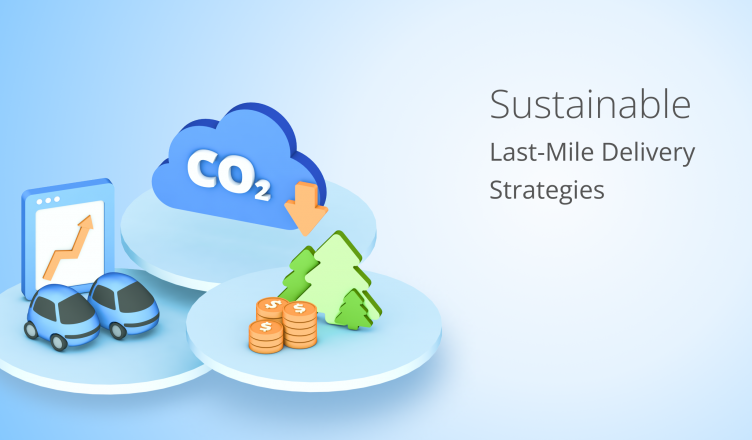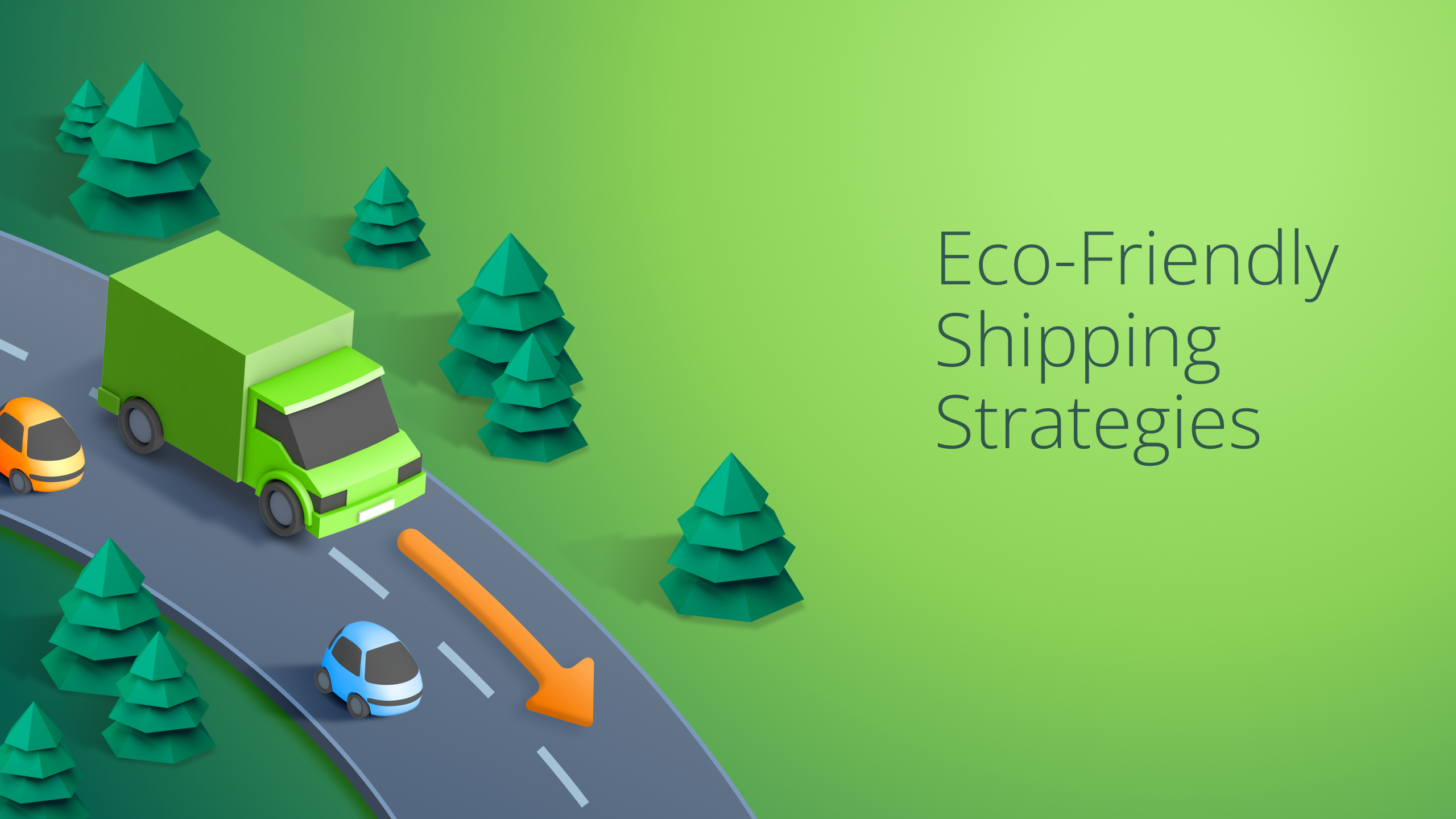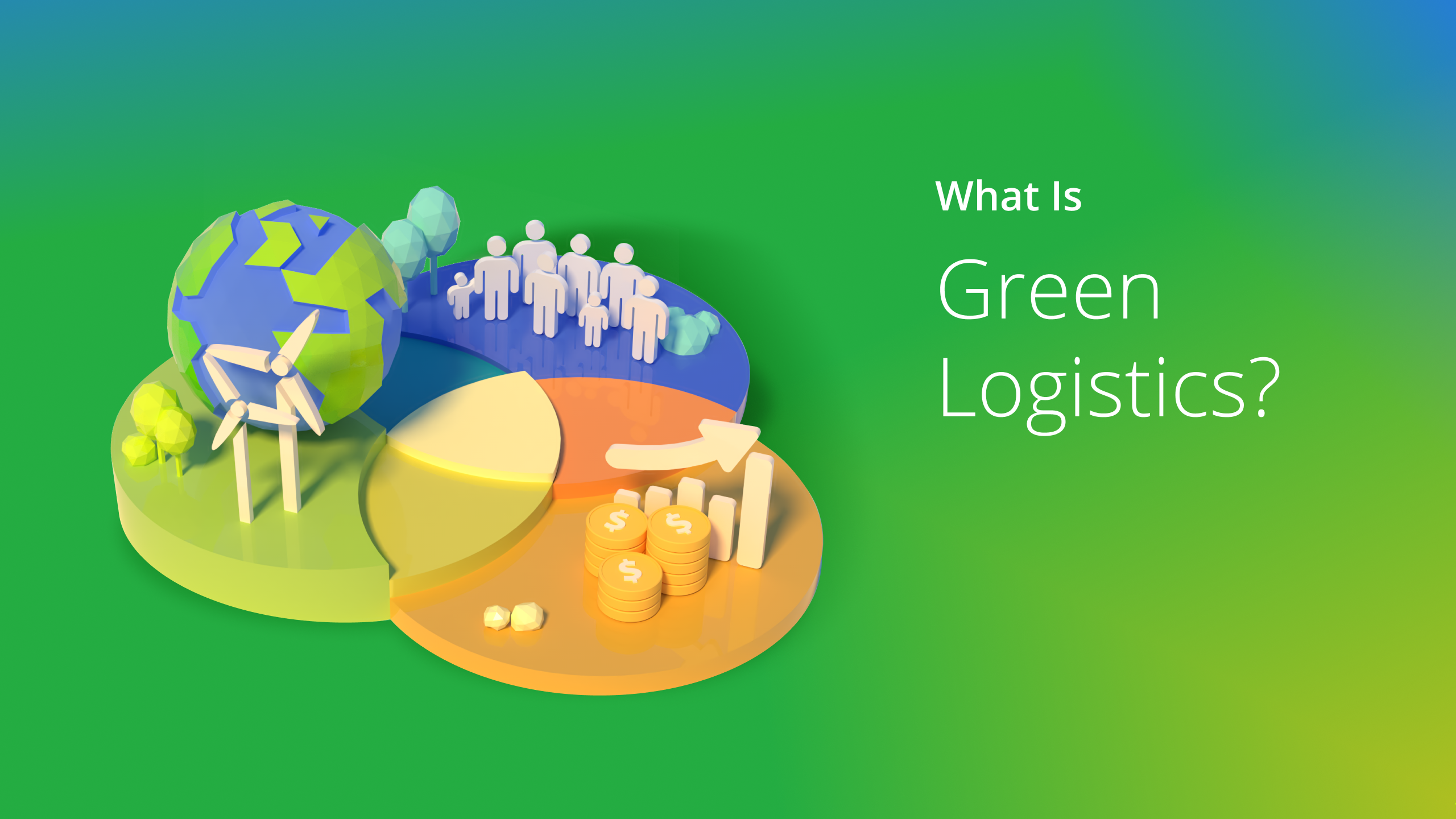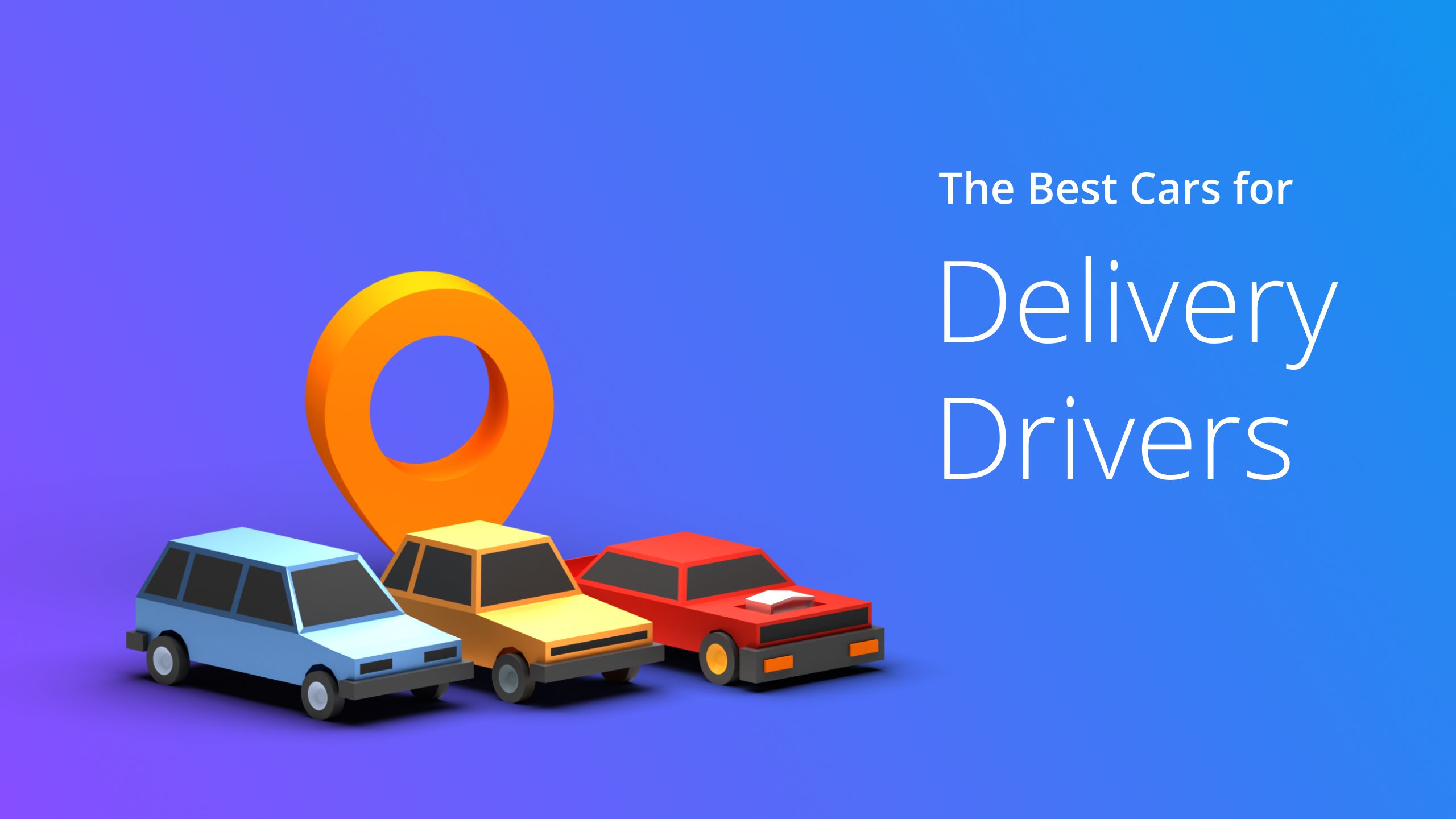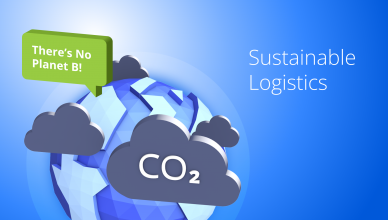The astounding growth of eCommerce has skyrocketed carbon emissions, making sustainable last-mile delivery more crucial than ever.
According to Statista, the total emissions caused by parcel shipping may generate 25 million tons of carbon dioxide by 2030.
Last-mile delivery sustainability is not just about reducing vehicle emissions. It can also help you win new customers and improve your brand image.
Today’s customers are more environmentally conscious than ever. According to a survey from airqualitynew.com, 43% of consumers said they would prefer to shop with a retailer if it offers sustainable delivery options.
But how can you mitigate your carbon footprint caused by last-mile delivery?
Below are the top five tactics you can use to reduce your brand’s impact on the environment.
Benefits of Sustainable Delivery
Here are the top three benefits of sustainable last-mile delivery.
Saves Cost
Adopting sustainable delivery practices can help you lower your expenses significantly.
By reducing fuel consumption and carbon emissions, you can reduce transportation costs and minimize environmental impact. This not only helps the bottom line but also contributes to a healthier planet.
Improves Customer Loyalty
Sustainable delivery options can also improve customer satisfaction and loyalty.
As consumers increasingly prioritize eco-friendly practices, businesses that offer green delivery choices can attract and retain environmentally conscious customers. This can enhance brand reputation and set companies apart from competitors.
Improves Your Brand Credibility
Sustainable delivery practices align with a company’s overall sustainability goals, helping to reduce its carbon footprint.
By integrating the practices into your logistics operations, you can demonstrate your commitment to environmental sustainability, which can resonate with both customers and stakeholders.
Optimize Delivery Routes to Make Your Last-Mile Delivery Sustainable
Route optimization is an integral part of a successful last-mile delivery management system. By making your route planning process efficient, you can save delivery times, reduce fuel bills and make your last mile more eco-friendly.
More efficient routes mean your drivers will cover fewer miles and spend less time on the road. It will also help keep your equipment in excellent condition.
Pen and paper or excel sheet-based route planning process cannot make your routes foolproof. You won’t have any concrete data to make your routes well-optimized and rely more on guesswork. This is where Route4Me’s trucking GPS app can help you.
Our software uses sophisticated algorithms to plan fuel-efficient routes with accurate driving directions for delivery drivers.
Route4Me’s multi-stop route optimization software factors in weather conditions, traffic congestion, sunrise and sunset times, left and U-turns, roadblocks, delivery time windows, load, height, weight, and more constraints to ensure less time is wasted on the road.
You can reduce last-mile emissions and fuel costs, and the number of vehicles on the road. This allows you to pass on the savings to customers in the form of lower prices and free delivery.
Companies like UPS and Hermes, which deliver millions of parcels each year, even use final mile software to calculate the most efficient routes to reduce carbon footprint.
Want To See For Yourself How Route4Me Can Help Make Sustainable Last-Mile Delivery?

Promoting Sustainable Last-Mile Delivery: A Green Option
Thanks to Amazon, faster delivery is now the norm. But fast shipping increases total carbon emissions by up to 15% and expenses by up to 68%, according to a group of researchers at MIT.
There could be times when your vehicle may run half-empty to service a same-day delivery. Also, next-day or same-day delivery options are not good for the environment, which customers often don’t realize.
Optimizing the last-mile delivery process can help mitigate these negative impacts.
Communicating that information to consumers and providing a slower-speed choice may help negate carbon emissions and make your last-mile sustainable.
MIT’s sustainable logistics initiative ‘green button project’ highlights that companies can change shopping habits by enabling consumers green choices.
The researchers found that explaining the environmental benefits of slower delivery to consumers worked much better than offering them financial incentives.
30% of customers who didn’t choose a slower delivery for financial incentives said they would prefer waiting longer for their deliveries when given environmental incentives.
The most fruitful way to influence customers to wait was by explaining their fast delivery choices in terms of trees. MIT researchers found that explaining this through “trees” was more effective.
For example, they asked consumers to save a hundred trees or opt for faster shipping. When posed with this, 40% said they’d wait. By using trees to explain the environmental impact of fast delivery options, companies can cut their last-mile delivery carbon footprint by 25%.
This can also increase customer satisfaction as customers can see that these companies are breaking down environmental jargon into more understandable terms, making it easier for them to understand and adapt to making it a pro-environmental choice.
In fact, according to an Accenture report, 43% of consumers are more likely to choose retailers that offer more sustainable delivery options.
However, you can still reward customers as well for choosing the green delivery option. For example, Amazon offers credits if customers select no-rush delivery.
Use Electric Vehicles for Sustainable Last-Mile Delivery
Traditional delivery fleets rely on fossil fuel-powered vehicles, which emit a lot of CO2. So, many eCommerce, transportation, and logistics companies such as UPS and Amazon have already started looking for alternatives.
Although delivery vehicles may contribute to a tiny portion of the traffic in urban areas, they generate over 50% of overall emissions for specific contaminants, according to University of California Institute of Transportation Studies researchers. Therefore, it’s time that you start including electric vehicles in your arsenal.
But the problem with electric vehicles is the batteries are not very efficient. They don’t come with enough storage, limiting the range of vehicles.
Plus, the distance your electric or hybrid vehicles can cover can vary significantly depending on the brands and models you use. Electric vehicles travel only a few hundred miles per charge.
However, you can solve this problem and ensure a sustainable last-mile by using advanced route optimization software. For example, the Route4Me route planner helps you plan the fastest and shortest routes while factoring in several constraints so that your drivers can visit more stops without losing battery power.
Route4Me has prevented 10 billion miles from being driven and reduced CO2 emissions by over 10 Billion. And it cleaned up enough air, equal to planting more than 87 million trees. Learn more about Route4Me’s Environment and Sustainability (ESG) initiatives.
Encourage Click and Collect or Buy Online Pickup In-Store (BOPIS)
Click and collect, also known as buy online & pick up in-store (BOPIS), is a package delivery method that allows online shoppers to pick up their orders from predetermined locations instead of getting them delivered to their homes or offices.
Implementing a click-and-collect model can help you boost your sales, especially during the holiday season. According to an Adobe survey of over a thousand American consumers, 82% of BOPIS shoppers are likely to shop for additional items while picking up their orders.
Large retailers like Walmart, Best Buy, and Target have already started offering curbside pickup and are reaping the benefits, so you shouldn’t be left behind.
There are many other benefits of the click and collect model apart from ensuring sustainable last-mile delivery. They include offering better visibility into the chain of custody and fulfillment flow, strengthening customer relationships, saving on delivery costs, and most importantly, saving the environment.
Offering click and collect options can decrease traffic because public transport commuters may pick up their order to or from work.
Secondly, vehicles don’t cause nearly as much congestion as double-parked delivery trucks, especially in urban areas. So, the overall environmental impact is much less, and more importantly, it’s cost-effective.
You can improve sustainability, also by switching to other micro-fulfillment centers such as automated lockers and local smaller warehouses, which could reduce harmful emissions and traffic congestion.
Last year, Accenture did a study to find out the impact of local fulfillment centers for eCommerce using data from Chicago, London, and Sydney, and the analysis was revealing. They found a micro-fulfillment strategy in cities could lower last-mile emissions by between 17-26% by 2025.
Offering curbside pickup service is easy with Route4Me. It comes with a curbside pickup app that seamlessly integrates with any eCommerce platform. Once integrated, you can manage multiple pickup stores, not miss any customer pickups, save time on order matching and do lore.
Here’s a comprehensive guide to click and collect delivery and how to set it up.
Let Your Customers Track Delivery Status in Real-time
Real-time tracking and communications via SMS or app with the end customer can reduce failed deliveries and improve first-time door opens, and cut down the repetitive trips your drivers would have had to make to make their deliveries again. That means saving fuel and zero unnecessary carbon emissions.
Also, good customer communication is critically important for delivering specific goods, such as perishables. If you fail to promptly deliver the goods to the customers, the waste becomes more than just fuel— it becomes the product itself.
Route4Me’s last-mile optimization solution solves this problem. It offers a customer alerting and notification feature to keep your customers informed about their orders automatically through email, SMS, or voice call.
In this way, the customers will know when their orders are close by. And you won’t need to reschedule deliveries, thereby wasting fuel and emitting more carbon.
Also, Route4Me offers a customer portal that helps you save fuel in the same way as the feature above. Customers can log in to this portal and track their orders by themselves.
Frequently Asked Questions about Sustainable Last-Mile Delivery
Is Last-Mile delivery sustainable?
How can I make my last-mile delivery more efficient?
What is the new trend for last-mile delivery services?
What's the biggest issue with last-mile delivery?
Does sustainable delivery mean slower service?
Conclusion about Sustainable Last-Mile Delivery Strategies
In the next ten years, the demand for last-mile deliveries is forecasted to grow by 78%, and emissions from those could increase by over 30% in 100 cities across the world, according to a study by the World Economic Forum.
However, by building the proper infrastructure and using the best route planners like Route4Me can significantly bring down last-mile emissions and costs.
Want To See For Yourself How Route4Me Can Help Make Sustainable Last-Mile Delivery?

